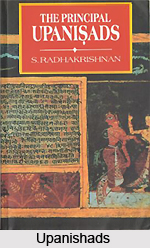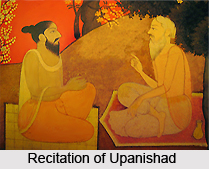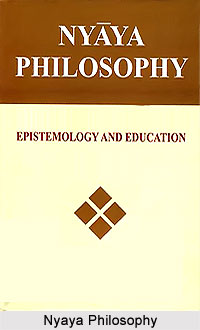 The Upanishads are the part of the Vedas and thus are the part of ancient Hindu scriptures that primarily deals with Philosophy, meditation and the true identity of God. Upanishads are mystic and spiritual reflections of the Vedas and are also known as Vedanta (the culmination of Vedas).
The Upanishads are the part of the Vedas and thus are the part of ancient Hindu scriptures that primarily deals with Philosophy, meditation and the true identity of God. Upanishads are mystic and spiritual reflections of the Vedas and are also known as Vedanta (the culmination of Vedas).
Upanishad is compilation of three words- Upa (near), Ni (down) and Sad (sit), which means sitting near at the ground and learn from the Guru or teacher. Upanishad gives the knowledge of Self or Atman, also the knowledge of Brahman.
Sages started writing the Upanishads in about thousand years BC.There are around three hundred and fifty Upanishads among which hundred and eight are mostly known. The eleven principal Upanishads are-
1. Aitareya Upanishad : Aitareya Upanishad is associated with Rigveda. It is short prose containing three chapters and thirty-three verses in total. Aiterya Aranyaka and aiterya Brahmana together forms Aitareya Upanishad. The first chapter ascribes atman as the divine creator, second chapter narrates the three births of atman while the third chapter deals with the quality of Brahman
2. Brhadaranyaka Upanishad : This is another older Upanishad, written by sage Yajnavalkya, which has three chapters namely, Madhu Kanda, Muni Kanda and Khila Kanda. The Madhu Kanda describes the identity of an individual and the relationship between Jiva and the Atman. Muni Kanda is the conversation between sage Yajnavalkya and his wife Maitrayee. Khila Kanda consists of the description of the different methods of worship and meditation.
3. Isa Upanishad : Isa Upanishad is the smaller Upanishad having only eighteen verses. The name of the Upanishad is derived from the sloka `Isavasyam Idam Sarvam`, which means `Supreme Lord envelops the world.`
4. Taittiriya Upanishad : Taittiriya Upanishad is the part of Krishna Yajurveda. It is divided into three parts or Vallis, namely Siksha Valli, Ananda Valli and Bhrigu Valli. Each Valli is subdividede into smaller verses called Anuvak.
5. Katha Upanishad : Katha Upanishad is also a part of Black Yajurveda. It consists of two chapters, each of which is again subdivided into three sections. Some passages of Katha Upanishad are common to Gita. It is in the question answer form where death God Yama is the teacher and young Brahman boy Nachiketa is the listener.
 6. Chandogya Upanishad : Chandogya Upanishad is the last eight chapters of Chandogya Brahman. It deals with the significance of meditation and depicts the greatness of the holy syllable OM and significance of the main life force Prana.
6. Chandogya Upanishad : Chandogya Upanishad is the last eight chapters of Chandogya Brahman. It deals with the significance of meditation and depicts the greatness of the holy syllable OM and significance of the main life force Prana.
7. Kena Upanishad : The Kena Upanishad is the part of Sama Veda. It consists of four sections, the first two in verse and last two in prose. Kena Upanishad narrates the uniqueness of creation and the single power that controls the whole world.
8. Mundaka Upanishad : It is also called Mantra Upanishad as it has sixty-four Mantras in it. The Mundaka Upanishad is the part of Atharva Veda. It has two chapters and each chapter is divided into many subdivisions or Khanda.
9. Mandukya Upanishad : It is also the part of Atharva Veda. Mandukya Upanishad describes the importance of the syllable OM. It is the smallest of all the Upanishads.
10. Prasna Upanishad : The Prasna Upanishad come in the form of six question and answers asked by six disciples to the sage Pippalada about the origin, existence and destination of life.
11. Svetastara Upanishad :This is also the part of Krishna Yajurveda. It has thirteen Mantras in six chapters. The Svestara was a sage who learned this Upanishad and taught it to his disciples.












